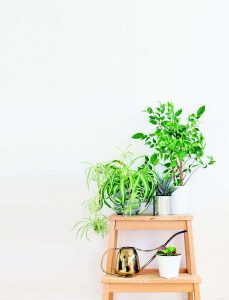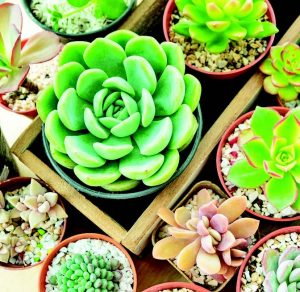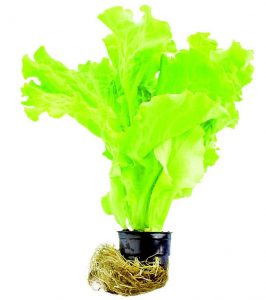Despite being carnivores, cats snack on a lot of greens: outdoor cats love to munch on grass while indoor cats nibble on houseplants. Unfortunately, a lot of plants we keep at home are toxic for felines!
No worries—your cat companions can chew on these plants without ending up at the vet’s as long as they don’t overeat, according to the American Society for the Prevention of Cruelty to Animals. (I have most of these in my garden and so far, so good!)
Spider Plant

Ornamental and very low maintenance, these are rather hard to kill. Perfect for those with brown thumbs!
Its long, spindly leaves have green edges and lighter-hued centers. They grow close to the ground but can reach up to two feet in height, depending on how much sun they receive (and how big your pot is, in case you’re doing container gardening). They produce baby plants known as “spiderettes” effortlessly, reported Nikki Tilley of Gardening Know-How; you’ll fool yourself into believing you’re such a good gardener!
Echeveria Succulents

If you don’t like watering plants, this is the perfect cat-friendly plant for you. In fact, the most common cause of mortality among these plants is overwatering, according to Jon Vanzile’s 2017 article in The Spruce.
Echeveria species are also known as “hen and chicks” because of how they propagate: a mother plant forms colonies of smaller succulents around it. They look like green roses growing close to the ground, thanks to their rosette pattern.
Many succulents are actually safe for cats, such as those belonging to the genus Echeveria. However, some are high in calcium oxalate, such as the moss rose and mother of thousands, so check online for the pet safety profile of each succulent you plan to grow in your garden.
Lettuce

Why should the cats have all the fun? You might as well grow plants you can eat!Even if lettuce is a cool-season plant as reported by Almanac.com, you can still grow it anywhere you are, as long as you time your seedlings right. December to January is a great time to sow your first seeds. Do this every two weeks and you’ll never run out of lettuce again!If your lettuce tastes bitter after being overexposed to the hot afternoon sun, wrap the harvested leaves in moist cloth and leave in the fridge for a couple of days to “break” the bitterness, advises TendingMyGarden.com.
Five-Color Silverbeet Swiss Chard

While it looks like lettuce, each plant can showcase five different stem colors: orange, purple, red, white, and yellow, according to Botanical Interests! Pretty to look at; yummy to eat!
A cousin of beets and spinach, this green leafy veggie poses no harm to kitties.
Balsam

Also known as the impatiens plant, it tolerates drought and dry soil, according to the Missouri Botanical Garden. If it does wilt during hot weather, it immediately perks up when you transfer it to a shadier corner.
This cat-safe plant also gives you pretty, edible flowers that you can add to your favorite salad!
Marigold

This ornamental plant has strong-smelling blossoms, according to Britannica. In fact, its flowers produce pyrethrum, a compound that repels mosquitoes!
The essential oils of the marigold plant provides about two hours of protection from mosquito bites, reported Tavassoli and team in a 2011 journal article. The cats might like them, but at least the mosquitoes don’t! Surely a winner, especially when it starts showing off its beautiful yellow flowers.
Carrots and Radishes


Again, why not treat yourself to a few edibles while you’re tending a feline-friendly garden?
Many gardeners prefer to plant carrot and radish seeds at the same time. Radishes grow faster than carrots, which means you can harvest the radishes while the carrots are still growing in the same space, according to Molly Allman’s article for SFGate.com. What a way to multitask! And if you have a small garden and have to resort to containers, baby carrots are the way to go.
Cockscomb

So called because its flowers resemble the “comb” on top of a rooster’s head, both its leaves and flowers are edible to both human and cat. According to Click and Grow, saute the young leaves for a protein-rich meal. Garnish with fresh blossoms for a dish that’s also visually appetizing!
To some, the blooms look like the gyra (folds) of the human brain. They make for long-lasting flower arrangements, in case you don’t fancy eating them.
Basil

While a basil plant won’t harm your cat, I doubt if any feline will be interested in it. Its aroma tends to turn off domestic cats, which means basil plants remain largely untouched. More basil for you, yay!
After all, you can’t make a classic margherita pizza without fresh basil leaves, can you? You can also add basil leaves to sauteed seafood for a Thai-inspired dish.
This appeared in Animal Scene magazine’s April 2018 issue.






